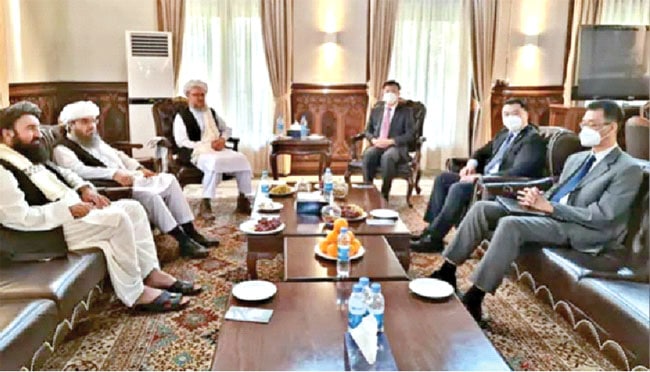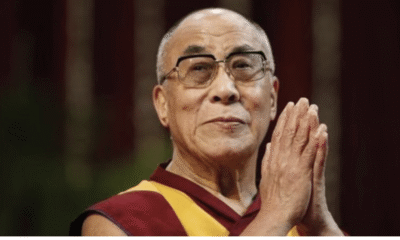
|
Getting your Trinity Audio player ready...
|
The fall of Panjshir after the Pakistan Army’s midnight operation with choppers and drones marks a sad turn in the resistance movement in Afghanistan. In the absence of any material or moral support from world powers, the Panjshiri resistance forces could not hold on to their capital. Still, they vowed to continue their fight against the Taliban. The country is technically now under the full control of the proxy of Pakistan.
Taliban’s rise is going to vitiate the atmosphere in India’s neighbourhood once again. India had tasted the bitter pill in 1996-2001. It is better equipped today to take on any Taliban challenge to its security.
But it would be a mistake to treat the United States (US) withdrawal and the swift rise of the Taliban as a localised development. It has far-reaching consequences to global security and indicates an emerging new geopolitical dynamic in the world.
After the collapse of the Soviet Union in the 1990s, Afghanistan provided the first opportunity for the US to penetrate the erstwhile Soviet neighbourhood. It ended the Taliban regime in Kabul and Kandahar. It forced Osama bin Laden and his Al-Qaida to run for their lives and positioned itself firmly in Central and South Asia. From Tashkent to Bishkek to Islamabad, the regional powers were forced to back President Bush in his “War on Terror”. Besides its Kuwait War vintage bases in Saudi and Qatar, the US military had established central installations in Uzbekistan, Kyrgyzstan and Pakistan and operated freely from those bases.
Even the Russian and Chinese leadership had to acknowledge American power in the region. Just two years into office, Vladimir Putin rushed to Texas in November 2001 to meet President Bush at his ranch and extend his support to the US in its Afghanistan campaign. In his new but short-lived avatar as a democrat, Putin was less concerned about the geostrategic influence it would provide to the US in his backyard and more concerned about restoring Russia as an important global player and interlocuter. The Chinese, too, saw an opportunity in it. They extended support to the US in return for the State Department placing Uighur groups like the East Turkestan Islamic Movement under blacklist. The Chinese had even secured access to Guantanamo Bay to interrogate some Uighur prisoners captured in Afghanistan.
As the global power axis started shifting away from the Pacific-Atlantic to the Indo-Pacific, the US influence also seemed to be moving along with it. Eventually, in twenty years, the power axis has firmly shifted to the Indo-Pacific and the US influence too along with it. The US has emerged as a dominant force in the Indo-Pacific and mobilises its friends from East Asia, Western Europe and the Pacific to strengthen its position there. But the advantage that it had secured in West, Central and South Asia in the wake of its campaign in Afghanistan was what it had forfeited by the hasty and clumsy withdrawal.
A new power dynamic is evolving in the region. Russia and China are quickly filling up the vacuum created by the American withdrawal. A 21st-century cold war is taking shape.
America’s ‘War on Terror’, which forced countries like Russia and China also on the backfoot, had faced its first setback in 2003 when President Bush rashly ordered his forces into Iraq to dismantle Saddam Hussain’s regime. It was a disastrous war that had not only brought home thousands of body bags of American soldiers buttons of ignominy. Al-Qaeda was a near dead entity by the end of 2003. Laden was not even able to communicate with his colleagues for more than two years. So was the Taliban leadership, hiding in the rough terrain of Afghanistan’s South or the rogue borderlands of Pakistan’s North-West. But the war and debacle of the US forces in Iraq had altered their fortunes and provided a fresh lease of life to both. The War on Terror was never the same again.
Barack Obama came to power in 2009, promising his countrymen to end the war. But when senior army official General Stanley A McChrystal was sent to Afghanistan to assess the situation, his submitted report was just the opposite. General McChrystal had recommended infusing another 80,000 to 1,00,000 US soldiers into Afghanistan to annihilate the Taliban and Al Qaeda threat. Unfortunately, for the Democrats in the White House, there was no appetite for war anymore. The first deadline was set for withdrawal in 2011. It took ten more years and two more presidents to execute the withdrawal finally. Incidentally, the one who argued against sending more forces to Afghanistan and compelled Obama to declare the withdrawal date was none other than his Vice President Joe Biden.
The decade between Biden the vice-president and Biden the President had shaped new geopolitics globally with the region as the epicentre. As the American resolve to continue the fight weakened demonstrably, countries in Central Asia started wriggling out. The Americans were forced to vacate their bases. With their security grouping called the Shanghai Cooperation Organisation – SCO, the Chinese have sucked the Central Asians into their orbit, while Putin, not to be left behind, formed his security alliance called Collective Security Treaty Organisation – CSTO.
Obama had attempted to make up for his losses in South, West and Central Asia by turning attention to East Asia and Indo-Pacific and announcing Asian Rebalance or Pivot to Asia policy in 2012. Putin seized the opportunity and announced his Eurasian dreams in 2011, closely followed by Xi Jinping’s Belt and Road Initiative – BRI in 2013. In the next few years, while the US administration had focused its attention on the Indo-Pacific, the Russians and the Chinese had converged their interests in Eurasia.
Putin had articulated his grand vision for Eurasia in an article that he authored in the Russian newspaper Izvestia on October 3, 2011. His Eurasian integration programme was about the “beginning of a new ideology and geopolitics for the world”. The basis for this programme will be “civilisation”, not the contemporary political ideas like democracy, liberalism, and the rule of law. Russia and China will be the partners in this program, which is extendable to Africa as Afro-Eurasia.
India is standing at the intersection of the new Cold War regions – the Indo-Pacific and Eurasia. Its geostrategic interests are tied to both regions. It needs to tread cautiously in the evolving geopolitical conflagration to ensure that while upholding its security interests, it will also hold on to its commitment to strategic autonomy.
After all, the intersection is also about authoritarianism versus liberalism.
(The article was originally published in Organiser Magazine on September 12, 2021. Views expressed are personal.)



